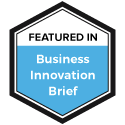
Creating Joy, One Bird at a Time: Lessons in Leadership
Creating Joy, One Bird at a Time: Lessons in Leadership
What does it take to build a business that brings people joy — not just once, but over a lifetime?
In this episode of The Bliss Business Podcast, we met Jim Carpenter, founder and CEO of Wild Birds Unlimited, the largest backyard bird feeding and nature specialty franchise in North America. With over 350 locations, Jim has done more than sell bird feeders — he’s fostered a movement rooted in connection, joy, and nature.
But Wild Birds Unlimited isn’t just a retail brand. It’s a culture built around something far deeper: delivering daily moments of peace, awe, and community through a shared love of birds and nature. Jim’s story is one of mission-driven growth, sustainable leadership, and the power of staying true to your values — even as you scale.
A Business Built on Joy
Jim’s journey began over four decades ago when, unemployed and unsure of his next steps, he followed his passion for birdwatching and opened a small shop in Indianapolis. What started as a personal interest quickly became something more: a joyful refuge for others.
From the beginning, joy wasn’t a marketing slogan — it was part of the company’s DNA. In fact, Jim includes it right at the top of Wild Birds Unlimited’s mission and vision documents. “We bring joy into our customers’ lives,” he says. “That’s the first thing we say.”
But joy, as Jim emphasizes, doesn’t just happen. It’s something you design for, reinforce, and commit to daily. His approach includes writing a strategic white paper each year that outlines where the company is headed — and why. This deep intentionality helps ensure that everyone, from headquarters to individual store owners, is aligned in purpose.
The Power of Culture, Consistency, and Connection
One of the most impressive aspects of Wild Birds Unlimited is how it maintains such a strong and joyful culture across hundreds of locations. Jim credits this to a mix of mindset training, values-based leadership, and a relentless focus on customer relationships.
Instead of transactional interactions, store employees are trained to create meaningful experiences. Walking into one of their stores is meant to feel like entering a refuge — not just for birds, but for people. Birdsong plays softly in the background. Educational materials are at hand. And employees are ready not just to sell, but to advise, connect, and serve.
This emphasis on emotional connection pays off. According to a Harvard Business Review study, brands that emotionally connect with customers see a 306% higher lifetime value. Wild Birds Unlimited is living proof of that.
Franchise Growth Without Compromising Soul
What’s perhaps most remarkable is how Wild Birds Unlimited has scaled its mission without diluting it. As Jim puts it, “Every company has a culture — it’s either intentional or accidental.” Through franchisee support, regional coaching, shared best practices, and robust community-building, the company has maintained a strong sense of identity across hundreds of independently owned stores.
That culture extends beyond the customer experience. Jim shared how Wild Birds Unlimited recently became 30% employee-owned through an ESOP (Employee Stock Ownership Plan), allowing employees to directly benefit from the company’s success. It’s a powerful example of conscious capitalism — where all stakeholders, not just shareholders, win.
Nature as a Teacher, Business as a Gift
Throughout the episode, Jim returns again and again to one theme: everything in business (and nature) is connected. From the way birds return to a well-placed feeder, to the way joy ripples out from a single store experience, it’s all about relationships.
Even something as simple as putting bird cams in your backyard — something Jim still does — becomes a metaphor for leadership: being present, observing, listening.
And when customers choose to visit a Wild Birds Unlimited store, Jim sees it as a gift. “They had dozens of other places they could go,” he says. “So when they come to us, we owe them something special in return.”
Final Thoughts
Jim Carpenter’s story is a reminder that scaling a joyful, human-centered business is not only possible — it’s powerful. When you lead with purpose, prioritize people, and treat every customer interaction as an opportunity for connection, you create something far more lasting than a business.
You create community. You create trust. You create joy.
And in today’s noisy, fast-paced world, that might just be the greatest differentiator of all.
Check out the full episode on The Bliss Business Podcast to hear more from Jim about leadership, joy, nature, and building a business that makes people — and birds — feel right at home.
Check out our full conversation with Jim Carpenter on The Bliss Business Podcast.
Originally Featured on The Bliss Business Podcast Blog








Recent Comments